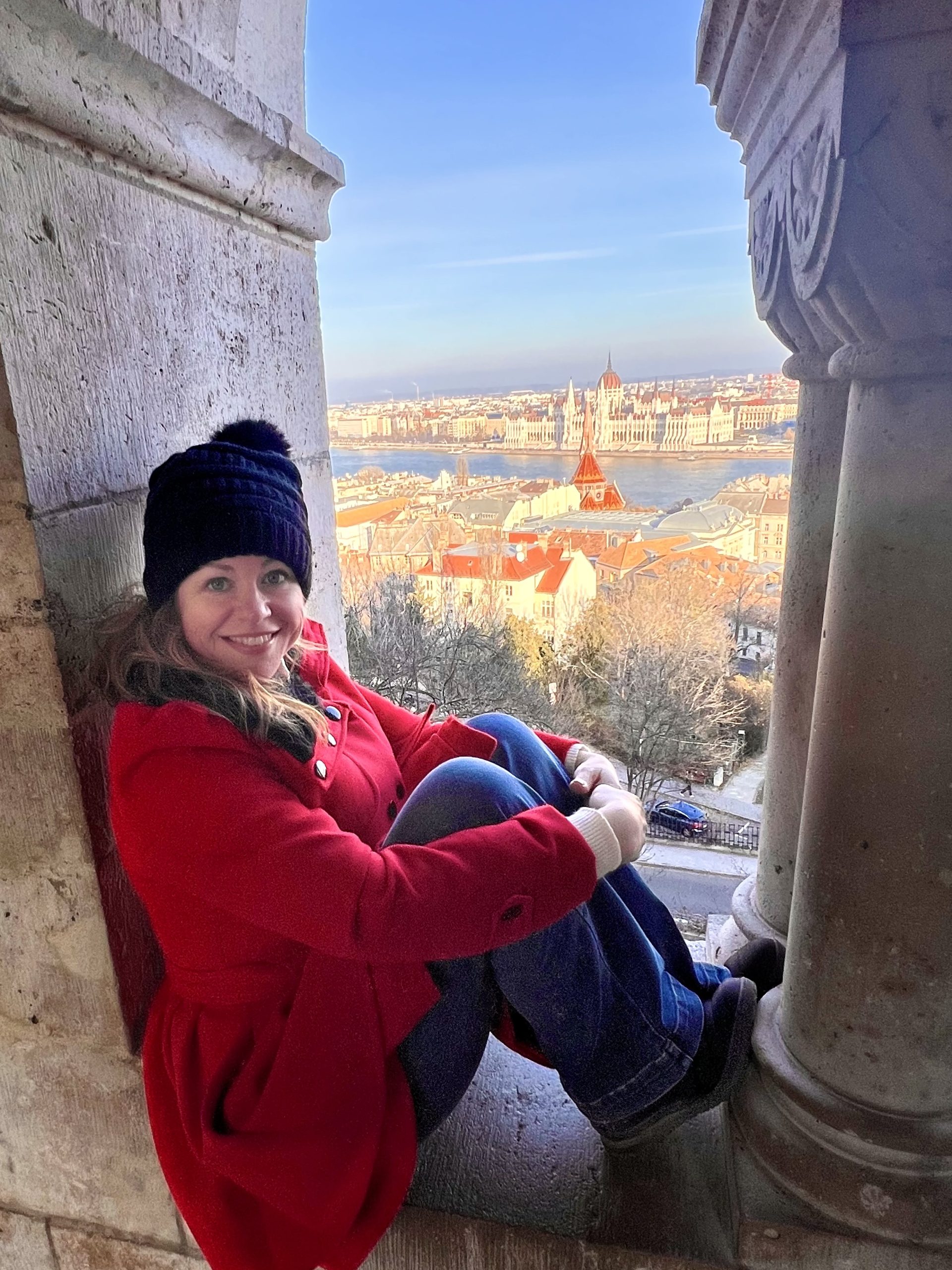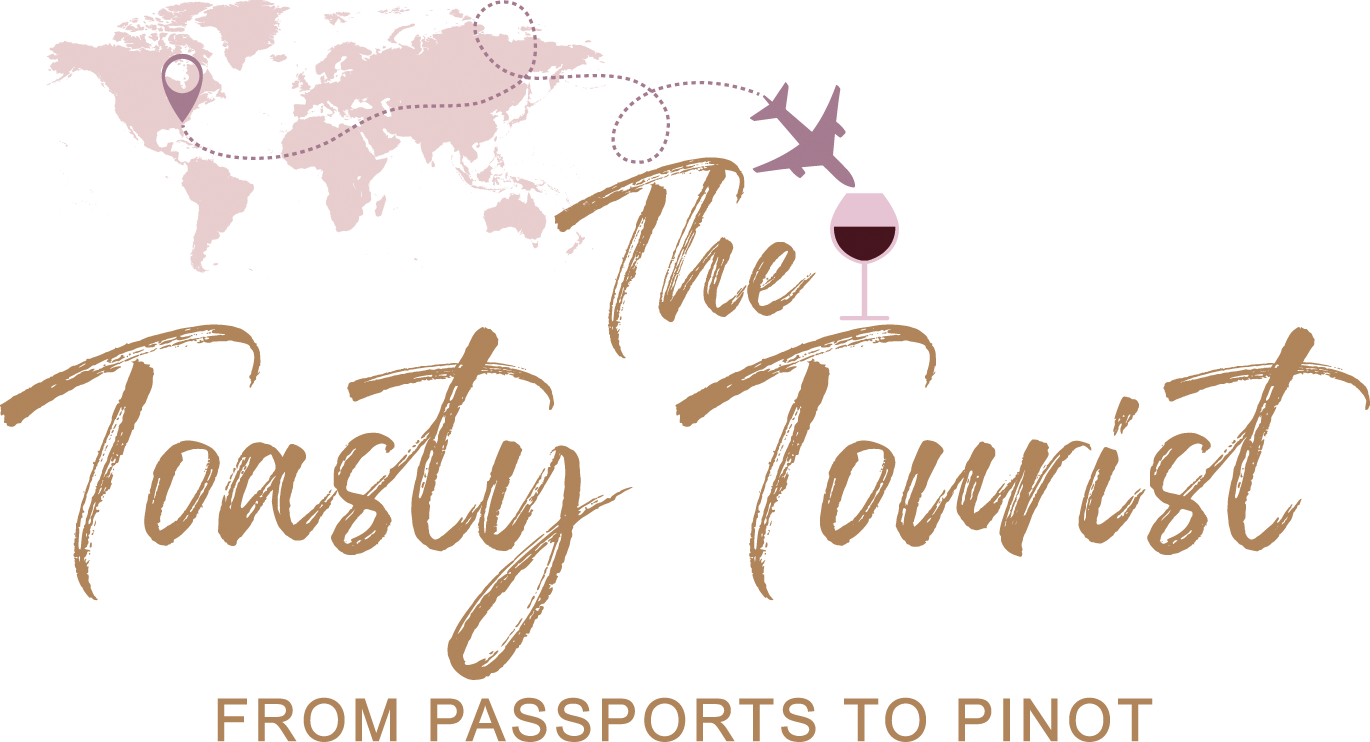Three Days in Beautiful Budapest

Budapest is one of my very favorite cities, and if you have the opportunity to go, stay as long as you can! However, since many of us have limited PTO and families/pets at home, three days in beautiful Budapest is a great starting point.
If you are in Vienna, you may be tempted to make Budapest a day trip. That is technically doable, but not recommended. You would barely scratch the surface, and spend nearly as much time on the train as in the city (it’s a 2.5 hour train ride, then you still have to get into the city). Find the extra few days and use this itinerary as a guide to make the most of your time!
About Budapest
Budapest has a fascinating and often tragic history. One of our guides on our recent trip said they have always been on the wrong side of every war. Anyone who liberated them then turned around and occupied them (in the 20th century, that would be Nazi Germany and the Soviet Union). The last occupation (by the Soviets) ended in 1991, and the people are still so happy to be a democratic nation enjoying the freedoms their parents only dreamed of.
We enjoyed how welcoming Budapest is to tourists (especially Americans). America represents opposition to communism, a sentiment the people of Hungary heartily agree with. Although I learned the basic tourist phrases in Hungarian: “please”, “thank you”, “hello/good day”, “where is the bathroom”, etc, Hungarian is an exceptionally difficult language. Most people that I came in contact with spoke varying degrees of English (except for the information desk at the Keleti train station, of all places). They were amazed and delighted when I attempted my Hungarian phrases – no matter where you are going, do your best to learn the basics – it is very appreciated!


When to Go and Where to Stay
The secret is out about Budapest, and it gets quite busy in the summer with tourists from all over the globe. This happens again near Christmas when the city lights up and the markets open. It can also be bitterly cold in winter, so, as for most of Europe, shoulder season (March-May and Sept-Nov) is your friend. If you do want to go and check out the markets (we did!) go mid-November to early December before all the crowds descend – just check the opening dates! In 2023, the markets opened November 17. We were there the first weekend in December and it was packed out -so I would also avoid the weekend if you can!
Budapest is really 3 cities – the Pest side is east of the Danube river, and is the center of activity for most tourists. Buda is west of the Danube, and is quieter and more residential. Finally, Obuda is “old Buda” – as the name implies, this is the oldest part of the city, and not a major tourist center. In most cases, I would recommend staying in Pest to be closer to all the fun! There are ample 4 and even 5 star hotels to stay downtown that are very affordable! The Three Corners Downtown Edition Hotel is in a perfect location, but if you would like to splurge, head to The Kempinski Hotel Corvinus, with its view of the ferris wheel in Erzebet Ter (Elizabeth Square). If you want to REALLY splurge, go to the Four Seasons Hotel Gresham Palace. The Gresham Palace is a restored Art Nouveau palace overlooking the Danube. Peek inside, even if you don’t stay there!


Itinerary
Day 1: Get to Know Historical Pest
A great way to start off a visit to any new city is a walking tour! Guruwalk.com has a variety of free walking tours in many cities (you just tip your awesome tour guide). They are usually 2-3 hours, and provide a great introduction to the city. For less structure, a hop-on hop-off bus tour would fit the bill.
This itinerary takes a circular route around central Pest. Feel free to start at whichever site is closest to your hotel, and make your way around the circuit!



Cafe Breakfast
Start your day off with breakfast at one of Budapest’s many historic cafes, such as Cafe Gerbeaud or Parisi Passage. If you start your day early, head to New York Cafe – billed as “the most beautiful cafe in the world”. It has the crowds to match, but before 9am you shouldn’t need to wait too long!

Hungarian Parliament Building
Once you are fueled for the day, head to the Hungarian Parliament Building. This incredible Gothic Revival building is the largest in Hungary, and one of the most beautiful buildings in the world. You can take a tour of the interior, which includes the Holy Crown, Sword, and Sceptre of Hungary – used for the coronation of Hungarian kings since 1256. It’s recommended to purchase the tour (which includes an audio tour) on their website prior to the day you plan to go.



Shoes on the Danube Bank Memorial
After you take the tour and get plenty of photos, head to the Shoes on the Danube Bank. This memorial is a sobering reminder of the massacre of Hungarian Jews during WWII. Fascist Hungarian forces carried out the murders after ordering the victims to remove their shoes so they could be resold. The memorial stands today as a sobering reminder of those dark times.
Szechenyi Chain Bridge
Next, you will head to the Szenchenyi Chain Bridge, which spans the Danube between Buda and Pest. No need to cross over to the Buda side unless you relish the extra exercise, but take some time to admire the lions that guard the first bridge that connected the two cities, paving the way for the Budapest we know today.


Central Market Hall
This is a shopping must-visit (unless it’s Christmas market season – you can do your shopping there). You can reach the market by continuing your route along the Danube, or by taking a left to walk down Vaci Utca, a famous pedestrian shopping street. Go ahead and grab some lunch on the second floor of the market – this is where you will find eateries and other souvenirs!
You can find sausages, paprika, tokaji wine, and much more on the first floor. Do not leave Budapest without paprika – you can buy imported Hungarian paprika, but much cheaper and tasiter to get it at the source. Tokaji wine is another essential item – it is a golden dessert wine from Hungary’s most famous wine region, Tokaj. I’m not a sweet wine person by any means, but this wine hits all the right notes to finish off a meal. It is *much* more expensive in the US, so don’t miss your opportunity to stock up!
Hungarian National Museum
Now that your belly is full, time to keep your energy up by walking to the Hungarian National Museum. Note that it is closed on Mondays (like many museums throughout Europe). You can purchase your tickets ahead of time here! A visit to the museum can take as long or as short as you wish – they have a comprehensive collection of Hungarian art and historical artifacts. Some highlights include a piano used by Liszt (as well as Beethoven, but Liszt is the native son), a large Roman mosaic from the 2nd century, and many coins, maps, and archeological finds – not just from present day Hungary, but from throughout the lands (such as Transylvania) formerly held by Hungary.


St. Stephen’s Basilica
Next, walk through Vorosmarty Ter and Erzebet Ter (“Ter” means “square” in Hungarian) on the way to St. Stephens Basilica. The basilica is named after King Stephen, the first king of Hungary (his coronation mantle can be found in the Hungarian National Museum). The basilica contains his mummified hand as a relic, as he was canonized after his death. It is also the site of one of Budapest‘s main Christmas markets, which has been named the “Best Christmas Market in Europe” for the last 3 years! Don’t forget to check out the beautiful interior and make the climb to the top for a beautiful view.


Liberty Square
Finally, close out your day at Liberty Square. There is a Soviet War Memorial on the north end, commemorating the loss of Russian life during WWII. If you have learned a little about Hungarian history at this point, you know they were occupied by the Soviet Union from after WWII until 1991. As you might imagine, most Hungarians view the memorial as a symbol of their oppression. However, it remains due to a Communist law (now more of a request to maintains good relations) that the monument remain as-is. Although the monument stands, it is overlooked by the US Embassy, and it is flanked on both sides by statues of US Presidents: Ronald Reagan and George Bush Sr.
The southern end of the square houses yet another controversial memorial, The Memorial for the Victims of German Occupation. It refers to the Nazi occupation of Hungary during WWII (prior to the Soviet “liberation”). The problem is the implications of the imagery used – the archangel Gabriel representing Hungary is attacked by an eagle, representing Nazi Germany. This completely disregards the role the fascist Hungarian army played in the extermination of its own citizens. The holocaust of Hungarian Jewish citizens was taking place years before the Nazi occupation. The memorial was opposed by the majority of the population before and after its erection (which took place in the night without fanfare, due to the expected angry protests).
The memorial is now surrounded by photos, mementos, letters, and other memorabilia placed by the remaining family and friends of those victimized, which makes for a very moving sight.
You’ve reached the end of your first day! Finish it off with a meal at one of Hungary’s many fantastic restaurants (see Where to Eat and Drink) and/or a visit to the ruin pubs (see Day 3)!


Day 2: Explore the Buda Royal Palace Complex
Today you cross the Danube to check out the Castle District in Buda! I would recommend taking your time here and enjoying the views and slower pace in this area. It feels a bit like a quiet town within a city. Take the funicular up the hill unless it is the first Monday of the month (that day is reserved for maintenance). You also have the option of taking a bus, or walking if it’s a nice day!



Ruszwurm Confectionary
For a sweet breakfast in Buda, check out Ruzswurm Confectionary. It is the oldest confectionary in Hungary, with a list of distinguished clientele. They are very proud of their history – take some time looking through the photos and knickknacks. They are famous for the understated and delicious “Ruszwurm Cake” pictured above, made of vanilla whipped egg cream sandwiched between crisp pastry.


Fisherman’s Bastion
This fortress is your spot for iconic panoramic views of Pest and the Hungarian Parliament Building. Only a little more than 100 years old, Fisherman’s Bastion has never been used as an actual fortress, but was built to celebrate Hungary’s 1000th birthday at the turn of the century, and served as a lookout. it has the appearance of a Disney castle, with its classical architectural style and seven turrets. The views are free on the first level, but you are charged a fee to go on the top portion.
Matthias Church
Next, head to Matthias Church, with its mosaic roof. You can tour the church and museum inside (there is a cash only entrance fee of 1800 HUF), but the exterior was my favorite. Some version of the building has been standing since 1015 AD (the first was destroyed by Mongols, and it has been destroyed/rebuilt many other times since then). It has a rich history, and was the site of several coronations. We paid the entrance fee, but I enjoyed the exterior even more.
Buda Labyrinth
There is an extensive system of caves and tunnels under Buda Castle Hill, that have served multiple purposes throughout the years (cellar system, bomb shelter, prison, etc). The pathways are mostly well lit, but if you suffer from claustrophobia you may have some slight discomfort. You need to take part in a guided tour to visit. There are even evening “spooky” tours available – legend has it that Vlad Tepes (aka Dracula) was once imprisoned here!


Hospital in the Rock
Connected to the underground cave system, The Hospital in the Rock is an air raid hospital turned nuclear bunker. It is now a museum with over 200 waxworks and machinery to showcase how it once operated. There are hourly tours available for this unique attraction.
Buda Castle (incl the National Gallery and History Museum)
Inside the castle itself, you will find the Hungarian National Gallery and the Budapest History Museum. However, walking around the grounds and enjoying the courtyards and views is a great use of your time. Simply enjoying the surrounds of the castle also has the advantage of being free! The vistas are nearly as good as those from Fisherman’s Bastion, and usually less crowded.
If you have any extra time after enjoying your day on Buda Hill, now is your time to check out anything you missed on day 1, or just relax and hit a cafe or wine bar until dinner time!


Day 3: Thermal Baths, Ruin Pubs, and Cruise the Danube
You are in for a super fun day to end your visit! Today is all about relaxing and enjoying yourself in such a gorgeous, unique city.
Szchenyi Thermal Baths
The thermal baths are a highlight of any visit to Budapest. The city boasts quite a few thermal bath options, each with different pros and cons. We chose Szchenyi because it is in an interesting area (City Park), and is the biggest/most popular. Gellert Thermal Baths is another option, and would be a good choice if there is rain – their inside bath options are better than Szchenyi’s. Rudas Thermal Bath is more traditional (only open to both men and women on Saturday and Sunday), but has a beautiful city view.



Szchenyi baths are super easy to get to – City Park is at the end of Andrassy Avenue, which is a beautiful tree-lined boulevard modeled after the Champs Elysees in Paris. You also have the option of taking the historical metro line M1 (the oldest metro in continental Europe) directly to the baths.


Compared to similar experiences in the US, the rates are not bad, so I strongly recommend splurging a bit on a spa ticket. If you arrive without flip flops, robe, towels, etc, you will be charged to purchase them in addition to your tickets. if you even get the spa superior basic experience, you get all those items included, plus a spacious changing room, complimentary treats and champagne, and a private entrance/exit to the complex. You also have access to the VIP Palm House on the top floor (a cocktail bar/greenhouse hybrid). Current rates are approximately 68 Euros per person. Even if you don’t choose a spa package, at least purchase your fast track tickets ahead of time to ensure your spot!



City Park, Heroes’ Square, Vajdahunyad Castle
Szchenyi Baths are situated on the northern end of City Park, a green space complex that includes the scenic Vajdahunyad Castle, museums, and memorials. Heroes’ Square contains the Millenium Monument, which was built to commemorate the 1000 years since Hungary conquered the Carpathian Basin. In the winter, an ice rink outside of the castle is very popular with the residents.



Ruin Pubs
Simply put, ruin pubs are local bars that spring up in abandoned buildings, and make for some unique spots to grab a drink. The ruin pubs have become an iconic part of Budapest‘s nightlife, and the first and most famous is Szimpla Kert. It is a huge space with multiple levels, many bars (even a specific wine bar, which I appreciated), areas for games or live music, and a courtyard. It was amazing just walking from room to room and seeing the different personalities on display in different parts of the building. Besides Szimpla Kert, there is Mazel Tov (an upscale Meditteranean restaurant, see “Where to Eat”), Csendes Vintage Bar, Red Ruin, and many others. You could have a seriously fun night doing a ruin pub crawl.
They are primarily located in Budapest’s Jewish Quarter, so pop into Dohany Street Synagogue when you’re in the area – the largest synagogue in Europe!


Danube River Cruise
The views in Budapest are hard to match, and a river cruise is one of the best ways to enjoy them. Bonus points if the river cruise includes prosecco or cocktails, like this one! The best time to book would be right at or just after sunset when the city is lighting up (in the winter, that’s earlier than you may think – it can be around 3:45pm!). The banks of the Danube in Budapest are designated as a UNESCO World Heritage site, and it’s easy to see why. A relaxing cruise down the Danube can be a wonderful way to close out a visit to an amazing city.



What to Eat and Drink
The Food
Budapest has so many wonderful restaurants, it would be hard to go wrong – whether you want comfort food or Michelin-level gastronomy! I like to start my restaurant planning by taking a look at restaurants with the Michelin “bib gourmand” designation – that indicates the food is both incredibly well done plus a good value for the money. This led us to the conveniently located Hoppi Bistro for our last night in Budapest, and it was a wonderful, memorable meal. The mushroom soup was the best I had ever had, and the Tokaji wine pairing with dessert was sublime.



For high level comfort food, don’t miss Retek Bistro (“retek” translates as “radish”). This cozy spot offers an amuse bouche to start of your meal, as well as house made palinka to close it out (a traditional brandy, not for the faint of heart). If you happen to be on the Buda side, the Hungarian goulash at Lanchid Sorozo is a great value served in an adorable crock. The classic rocker decor is a fun touch.



Mazel Tov is a great spot when you are in the Jewish Quarter – just be sure to make a reservation! The vibe is great with plants and vines everywhere, as well as live music. Definitely enjoy all the Hungarian food you can while in Budapest, but if you are looking to check out a different cuisine, Mazel Tov‘s Meditteranean food is a good option!
The Drinks
It may come as a surprise to some, but Hungary is most famous for its wine! It’s always a great idea to start your evening in a wine bar trying out some delicious Hungarian wines. On the Buda side, do a guided wine tasting in the historic Faust Wine Cellar. In downtown Pest, check out Wine Not? – they have wines from all over the world, but the focus is local wine. They have great small bites, and are a good spot to purchase bottles to take home.


The must-try spirits are Unicum and palinka. There are a million varieties of palinka (a fruit brandy), and every family has their own recipe. I found it similar to German schnapps, which is nothing like the schnapps we have in the US! It’s not sweet, and is quite strong. We both enjoyed Unicum more – an herbal spirit that works well as either a digestif (to settle your stomach after your meal) or aperitif (prior to your meal, to “open” your palate).


What Are You Waiting For?
Whether you are doing a deep dive into Hungary or making Budapest a treasured stop on your European tour, I hope this guide has given you some great ideas to maximize your time! If you are going during Christmas market season, don’t miss a visit to Vienna as well. For more info, check out Ranking the Best Christmas Markets in Vienna.
Related
Cookie Consent
We use cookies to improve your experience on our site. By using our site, you consent to cookies.
This website uses cookies
Websites store cookies to enhance functionality and personalise your experience. You can manage your preferences, but blocking some cookies may impact site performance and services.
Essential cookies enable basic functions and are necessary for the proper function of the website.
These cookies are needed for adding comments on this website.
Statistics cookies collect information anonymously. This information helps us understand how visitors use our website.
Google Analytics is a powerful tool that tracks and analyzes website traffic for informed marketing decisions.
Service URL: policies.google.com (opens in a new window)



